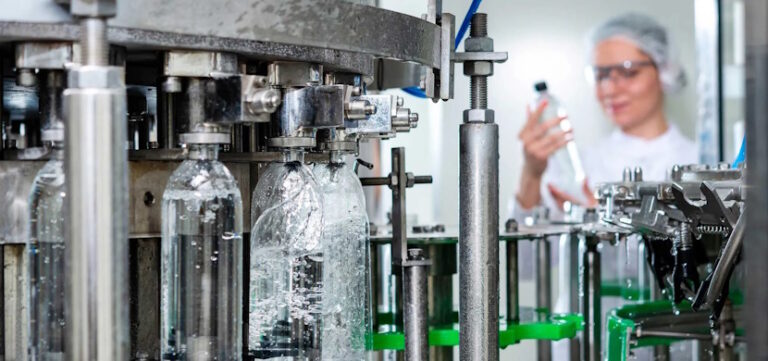The consumer packaged goods and retail industry is facing unprecedented challenges: consumer volatility, demand for sustainability, and geopolitical tensions. Discover how the alliance of data science, AI, and the virtual twin can help companies adapt!
The Consumer Packaged Goods and Retail (CPG-R) industry is undergoing a period of unprecedented upheaval. Far from limiting themselves to the simple manufacturing of innovative products, companies must navigate a complex and uncertain environment marked by major challenges.
The first of these is undoubtedly consumer volatility and versatility. According to the Bazaarvoice study entitled Shopper Experience Index, 78% of French consumers (73% overall) say they have changed their purchasing habits due to the economic climate. This volatility is forcing companies to be more agile and responsive in order to adapt to changes in consumer behavior. In addition, NielsenIQ’s CPG sustainability report reveals that 65% of global consumers say they are willing to pay more for sustainable products. This trend is accompanied by increased demand for transparency regarding product origin and manufacturing conditions, prompting companies to rethink their production models and supply chains. The current geopolitical context is causing volatility in raw material prices, disrupting supply chains and creating uncertainty for companies in the sector. The World Bank’s commodity price index rose by 12% in 2023, following a 42% increase in 2022, highlighting the need for better risk management and greater resilience.
Faced with these challenges, companies in the CPG-R sector must transform themselves in order to remain competitive. Supply Chain optimization, improving customer experience, and developing innovative and sustainable products are key challenges for success in this new environment. It is in this context that the alliance of data science, artificial intelligence (AI), and the virtual twin takes on its full meaning.
The virtual twin: a digital model serving industry
The consumer packaged goods and retail (CPG-R) industry is facing major challenges: unpredictable consumers, growing demand for sustainable and customized products, and supply chain disruptions.
The virtual twin, a digital replica of a physical system, makes it possible to model the entire supply chain, anticipate problems, and optimize processes. When combined with AI, it can be used to:
- Carry out large-scale production customization: simulate and test the manufacturing of tailored products to meet the specific needs of each customer.
- Manage risks and build resilience: analyze data on suppliers, weather conditions, and price fluctuations to anticipate disruptions and develop contingency plans.
- Accelerate innovation: simulate and test new products before they hit the market, reducing development time and costs.
- Improve sustainability: optimize the use of resources, reduce waste, and simulate circular economy scenarios.
Applied to the CPG-R industry, the virtual twin can model a factory, a warehouse, a distribution network, or even the entire supply chain. By connecting the various players in the ecosystem, the virtual twin provides greater visibility and enables better coordination. It then becomes possible to anticipate problems, optimize processes, and make informed decisions in real time. The virtual twin offers the possibility of adapting production lines, modifying parameters, and optimizing processes to meet the specific demands of each customer. In doing so, it paves the way for a new perspective on mass customization. This is because thanks to the virtual twin, companies can visualize the impact of customization across the entire production chain, identify potential bottlenecks, and adjust logistics flows accordingly.
Data science and AI: levers for optimizing the virtual twin
The effectiveness of the virtual twin relies heavily on the ability to collect, analyze, and leverage vast amounts of data. This is where data science and AI come into play.
- Data collection: Sensors, tracking systems, and other sources of information feed the virtual twin with real-time data. This data can relate to production, inventory, sales, deliveries, returns, etc.
- Data analysis: Data science makes it possible to extract relevant information from this massive amount of data. Predictive analytics, for example, can be used to anticipate market trends, stock-outs, or production issues.
- AI and machine learning: AI can be used to automate certain tasks and improve decision-making. For example, machine learning algorithms can optimize production planning, inventory management, or product distribution.
Real-world applications for the CPG-R industry
The combination of data science, AI, and the virtual twin opens up a wide range of possibilities for the CPG-R industry. These opportunities are evident at several levels. The first of these concerns the supply chain. By simulating different scenarios and analyzing data in real time, it is possible to identify bottlenecks, optimize logistics flows, and reduce costs, starting from the upstream phases of production cycles. Data science combined with the virtual twin is also a major driver of customer experience customization.
By basing brand strategy on the analysis of consumer data, it is possible to offer customized products and services, improve engagement, and build customer loyalty. This customer knowledge, combined with the power of the virtual twin, acts as an accelerator of innovation. The virtual twin makes it possible to simulate and test new products before they are launched on the market, reducing development costs and accelerating time-to-market. Finally, improving sustainability is another key perspective. By optimizing the use of resources and reducing waste, the virtual twin contributes to more environmentally friendly production.
Dassault Systèmes: a major player in digital transformation
With the 3DEXPERIENCE platform, Dassault Systèmes is positioned as a partner of choice to support CPG-R industry companies in their digital transformation. The 3DEXPERIENCE platform provides a collaborative environment that enables the creation of virtual twins, connects them to real-time data, and leverages AI technologies to optimize processes and decision-making.
The combination of data science, AI, and the virtual twin offers considerable opportunities for the CPG-R industry. By enabling companies to better understand their environment, anticipate change, and optimize their operations, these technologies help create a more agile, high-performing, and sustainable industry.
Want to learn more? Download our ebook “Future-Proof Your Manufacturing and Supply Chain Operations“.

